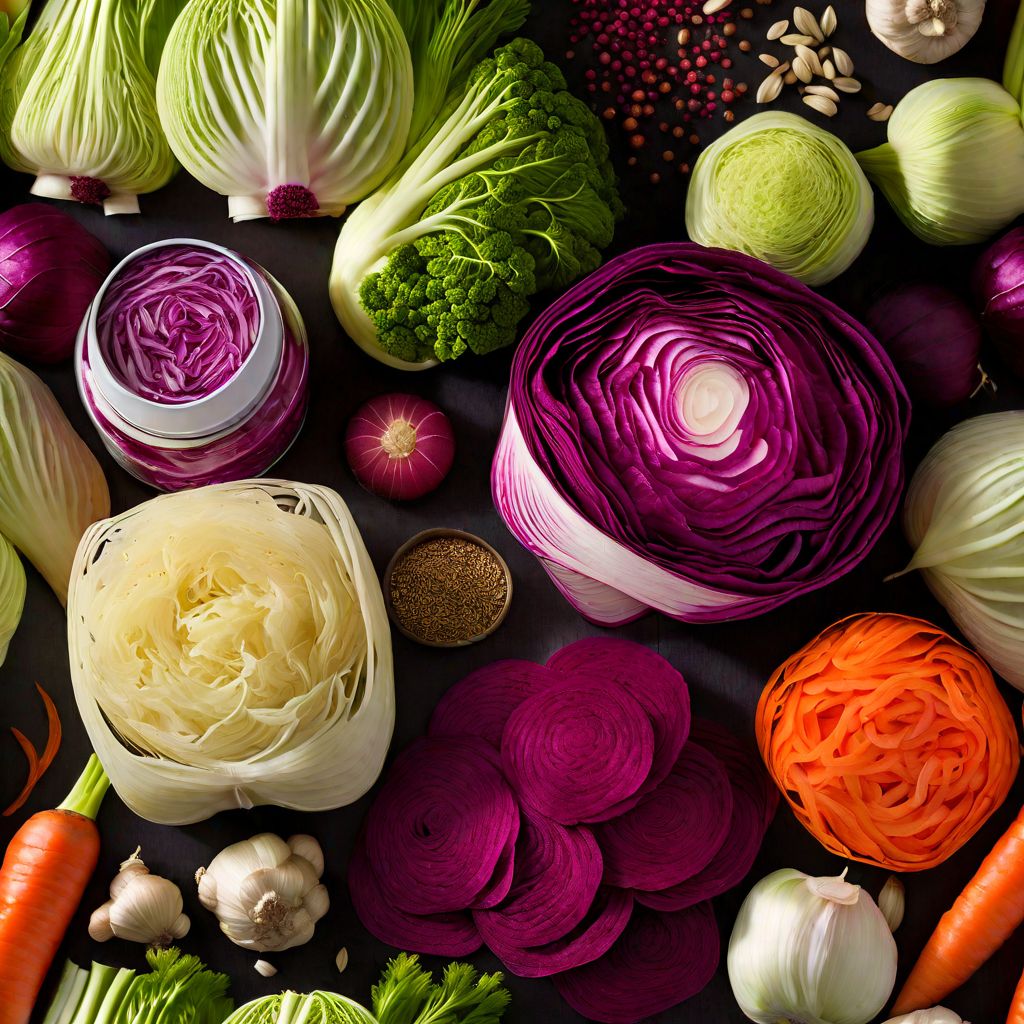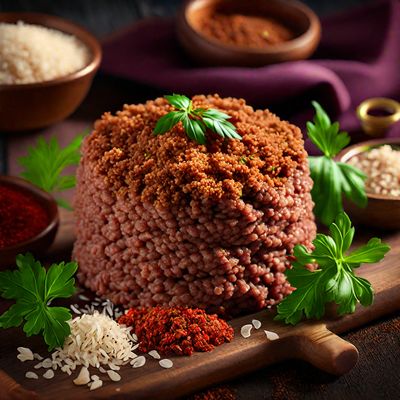
Recipe
Russian-style Kimchi
Borscht-inspired Kimchi: A Russian Twist on a Korean Classic
4.7 out of 5
In Russian cuisine, bold flavors and fermented foods are highly valued. This adaptation of the traditional Korean kimchi incorporates Russian influences, resulting in a tangy and spicy condiment that pairs perfectly with Russian dishes. Get ready to experience the fusion of two vibrant culinary traditions in this Russian-style kimchi recipe.
Metadata
Preparation time
20 minutes
Cooking time
N/A (fermentation process)
Total time
2-3 days (including fermentation)
Yields
4 servings
Preparation difficulty
Easy
Suitable for
Vegetarian, Vegan, Gluten-free, Dairy-free, Low calorie
Allergens
Garlic, Ginger
Not suitable for
Paleo, Keto, Low-carb, Nut-free, Soy-free
Ingredients
While the original Korean kimchi is typically made with napa cabbage, this Russian-style kimchi recipe uses a combination of cabbage and beets. Additionally, the spices and seasonings are adjusted to include Russian flavors, such as dill and horseradish, giving the kimchi a unique twist. We alse have the original recipe for Kimchi, so you can check it out.
-
1 small head of cabbage, shredded (about 4 cups / 940ml) 1 small head of cabbage, shredded (about 4 cups / 940ml)
-
2 medium beets, peeled and grated 2 medium beets, peeled and grated
-
2 carrots, peeled and grated 2 carrots, peeled and grated
-
4 cloves of garlic, minced 4 cloves of garlic, minced
-
1 tablespoon ginger, grated 1 tablespoon ginger, grated
-
2 tablespoons sea salt 2 tablespoons sea salt
-
2 tablespoons sugar 2 tablespoons sugar
-
2 tablespoons dill, chopped 2 tablespoons dill, chopped
-
1 tablespoon horseradish 1 tablespoon horseradish
-
1 tablespoon paprika 1 tablespoon paprika
-
1 teaspoon chili flakes 1 teaspoon chili flakes
-
1 teaspoon black pepper 1 teaspoon black pepper
-
1 teaspoon caraway seeds 1 teaspoon caraway seeds
-
1 teaspoon fennel seeds 1 teaspoon fennel seeds
-
1 teaspoon cumin seeds 1 teaspoon cumin seeds
Nutrition
- Calories (kcal / KJ): 80 kcal / 335 KJ
- Fat (total, saturated): 0.5g, 0g
- Carbohydrates (total, sugars): 18g, 12g
- Protein: 3g
- Fiber: 5g
- Salt: 2g
Preparation
-
1.In a large bowl, combine the shredded cabbage, grated beets, and grated carrots.
-
2.Sprinkle the sea salt and sugar over the vegetables. Massage the vegetables with your hands for about 5 minutes to release their juices.
-
3.Add the minced garlic, grated ginger, chopped dill, horseradish, paprika, chili flakes, black pepper, caraway seeds, fennel seeds, and cumin seeds to the bowl. Mix well to evenly distribute the spices.
-
4.Transfer the mixture to a clean, sterilized jar. Press down firmly to remove any air pockets and ensure the vegetables are submerged in their own juices.
-
5.Cover the jar loosely with a lid or a cloth and let it sit at room temperature for 2-3 days to ferment. Check the kimchi daily and press it down to keep the vegetables submerged.
-
6.Once the kimchi reaches your desired level of fermentation, transfer it to the refrigerator to slow down the fermentation process. It can be consumed immediately, but the flavors will continue to develop over time.
Treat your ingredients with care...
- Cabbage — Make sure to shred the cabbage finely to allow for better fermentation.
- Beets — Use gloves when handling beets to prevent staining your hands.
- Garlic — Freshly minced garlic is recommended for the best flavor.
- Ginger — Peel the ginger before grating it for a smoother texture in the kimchi.
- Dill — Use fresh dill for a vibrant and aromatic flavor.
Tips & Tricks
- Adjust the amount of chili flakes according to your spice preference.
- Allow the kimchi to ferment for longer if you prefer a stronger and more tangy flavor.
- Serve the kimchi as a side dish with traditional Russian dishes like borscht or pelmeni.
- Use the leftover kimchi to add a burst of flavor to sandwiches or salads.
- Experiment with different vegetables and spices to create your own unique Russian-style kimchi variations.
Serving advice
Serve the Russian-style kimchi chilled as a side dish or condiment. It pairs well with hearty Russian soups, stews, and dumplings. The tangy and spicy flavors of the kimchi will add a delightful kick to your meal.
Presentation advice
Transfer the kimchi to a serving bowl or plate, garnish with fresh dill sprigs, and sprinkle some paprika on top for an attractive presentation. The vibrant colors of the cabbage and beets will make the kimchi visually appealing.
More recipes...
For Kimchi » Browse all
For Korean cuisine » Browse all
More Korean cuisine dishes » Browse all

Dwaeji gukbap
Pork soup with rice
Dwaeji gukbap is a traditional Korean soup that is made with pork and rice. It is known for its hearty flavor and warming properties, and is often...

Godeungeo gui
Grilled Mackerel
Godeungeo gui is a traditional Korean dish that features grilled mackerel with a flavorful soy sauce and garlic marinade. This dish is perfect for...

Gopchang-gui
Grilled small intestines
Gopchang-gui is a traditional Korean dish made from grilled beef or pork intestines.
More Russian cuisine dishes » Browse all

Prianik
Prianik is a traditional Russian gingerbread cookie that is made with honey, spices, and flour. It has a sweet, spicy flavor and a soft, chewy...

Kurnik
Kurnik is a traditional Russian dish that is typically served during special occasions.

Zefir
Zephyr
Zefir is a Russian dessert made with whipped egg whites and sugar. It has a light and fluffy texture and a sweet flavor that makes it a popular treat.











